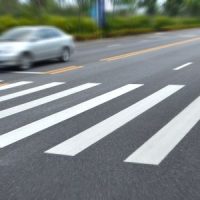Difficulties in Pedestrian Accident Cases

No legal case is actually “easy.” But if there’s one type of case that the general public misperceives as easy, it is cases where a car hits a pedestrian. While, seemingly, a car should never hit a person, and thus, the case should be one that is simple to win, there are actually a lot of complexities and defenses in the typical pedestrian accident case.
Following the Rules?
One difficulty with pedestrian cases, is that many times people who are on foot, simply don’t follow the rules of the road(or the crosswalks, as the case may be).
Sometimes that is accidental—not as many people are familiar with when a pedestrian has right of way, as opposed to when a vehicle has a right of way. And many pedestrian crossings have crossing lights, but just as many do not.
But often, it may just be inconvenient to cross at a designated crosswalk; the crosswalk may be far away, and thus, the inclination is for the pedestrian to just run across what seems to be an empty street.
Who Could Have Avoided the Accident?
But even when the pedestrian is not following the rules of the road, or not crossing at a crosswalk, that isn’t the end of the story. That’s because of the “last clear chance doctrine.” Even if the pedestrian is crossing somewhere he or she should not cross, if the vehicle has the last clear chance to see, and thus avoid, the pedestrian, the vehicle driver can still be at fault.
Who Do Jurors Sympathize With?
Jurors on a pedestrian accident case may actually sympathize more with the vehicle driver, than with the pedestrian. This may largely depend on geography; a jury in a rural area where more people drive on cars on open highways may sympathize with drivers, whereas jurors in metropolitan areas, who normally travel on foot, may sympathize more with the pedestrian who was hit.
Reconstructing the Accident
Reconstructing pedestrian accidents to see who is at fault, can also create difficulty. Pedestrians don’t have passengers the way cars do, and thus, there may not be witnesses to the pedestrian accident.
And while a car can have property damage, skid marks on the road, or other physical indicators of how the car was hit, giving evidence to how the accident happened, our bodies do not; the fact that someone has a head injury or a shoulder injury, doesn’t necessarily give any meaningful indication to how the accident may have happened.
The pedestrian is also at a disadvantage because, as the one hit, the pedestrian is less likely to have a definite memory of how the accident happened. The driver of a vehicle, who may not be nearly as injured, may have a better recollection of the facts of an accident, and thus be a more persuasive witness.
Pedestrian accident cases are difficult but not impossible to win. Call the Knoxville personal injury attorneys at Fox Farley Willis & Burnette, PLLC, today.
Sources:
leg.state.fl.us/statutes/index.cfm?App_mode=Display_Statute&URL=0300-0399/0316/Sections/0316.130.html
bikewalkcentralflorida.org/resources/laws/
